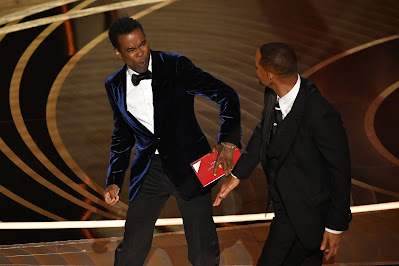The First of April some
do say
Is set apart for all Fool’s Day
But why the people
call it so
Nor I nor they themselves do know
– Poor Robin’s Almanac (1760)
Where does the the custom of playing pranks on April 1 originate? Although the answer is likely unknown, roots can be traced to origins similar to the “April Fools' Day” folly we know today.
Stephen Winick, writer and editor at the Library of Congress’s American Folklife Center, shares this information …
“People have long speculated about the origins of this most foolish holiday, suggesting the Roman Saturnalia, Druidic rites in Britain, the carnivalesque medieval celebration of the Feast of Fools, and even the Indian festival of Holi as possible origins. But despite attempts to establish an earlier origin for the day, clear references to a tradition of fooling in April don’t begin until the late Middle Ages.
“It’s possible that there’s a glimpse of April Fools’ Day in Chaucer’s “Nun’s Priest’s Tale” (ca. 1390), which shows the rooster Chauntecleer being fooled by, and in turn fooling, a fox. This occurs “Syn March bigan, thritty dayes and two,” or 32 days after March began, i.e. April 1. This would be an early, clear reference to the date, but many scholars think the word “bigan” is a scribal error …
Chanticleer and the Fox in a medieval manuscript miniature
“In France, “poisson d’avril,” or “April fish,” is the name for a person duped on April Fools’ Day. The first reference to “poisson d’avril” is from a 1508 poem by Eloy D’Amerval called Le Livre de la Deablerie, or The Book of Deviltry. However, from the context we can’t be sure if the author was referring to April 1 or to fools in general. The idea of the “April fish” seems to be the fact that fish were plentiful and hungry in the spring, and thus easy to catch – an “April fish” was more gullible than a fish at other times of the year. Thus, a mere reference to an “April fish” does not itself prove there was a holiday on April 1 …
“The first certain reference to April Fools’ Day comes from a 1561 Flemish poem by Eduard De Dene. In the poem, a nobleman sends his servant on crazy, fruitless errands. The servant recognizes that he is being sent on “fool’s errands” because it’s April 1.”
(Stephen Winick. “April Fools: The Roots of an International Tradition.” Folklife Today. Library of Congress. https://blogs.loc.gov/folklife/2016/03/april-fools/. March 28, 2016.)
Fool's errands, April fish, foolish roosters – all may be referenced as distant relatives to our unofficial prank holiday, but one thing is certain – whatever the origins, the enduring power of this folk tradition is pretty amazing. The Catholic Church once held a carnival-like “Feast of Fools” (ironically on or about the feast of the Circumcision) in medieval France and England on January 1 that was eventually banned by the 15th century. But, the holiday continued for hundreds of years.
History Note:
The Feast of Fools was a festival celebrated annually on January 1st throughout Europe and particularly France. It was a cherished day, for it was the one day where Christian morals were abandoned and replaced with ridiculous rites. Serious Christians were allowed to create parodies of church rituals.
Essentially, it was the "fools", aka the lower class's, opportunity to openly mock the clergymen and the church, and create parodies of ecclesiastical ritual. The tradition was that a young boy was chosen as the mock "pope" or "bishop" and the highest local church officials were regulated to the status of servants. This young boy was called the King of Misrule, or the King of Fools. However, the fake bishop was dubbed other names, too. In England, he was referred to as King of the Bean and the Abbot of Unreason in Scotland. However, one thing certain for all fake bishops, and that was that they had the power to call people to disorder.
During the festival, performers wore animal masks and women's clothing, sang obscene and bawdy hymnal songs, drank excessively, hurled manure at bystanders, ran and leaped through the church, rolling dice at the alter, howling through the streets and other scurrilous acts that parodied the liturgy of the church. In addition, people would drive about on carts through the streets to rouse laughter from their fellows through performances that involved indecent gestures and language. One mini-play created loosely followed Mary's journey into Egypt on the back of a donkey and was appropriately titled, "Play of the Ass." During the mock services, prayer responses were replaced with a hearty, 'hee-haw' instead of an 'Amen.'
Victor Hugo wrote Quasi Modo as the King of Fools in Hunchback of Notre Dame in response to the festival centuries later.
(“La Fete des Fous.” Medieval Europe. http://medievaltimestheatre.weebly.com/the-feast-of-fools.html.)
Some of the Best Hoaxes Of All Time
* The earliest April Fools’ Day hoax on record was in 1698, says Alex Boese, curator of the Museum of Hoaxes. “People in London were told to go see the annual ceremony of the washing of the lions at the Tower of London,” he says. “They showed up at the Tower of London, but”—alas—“there was no annual lion-washing ceremony.”
The street prank worked so well that people kept pulling it year after year, targeting mostly out-of-towners. “By the mid-19th century, pranksters had printed up fake tickets,” he says. “Hundreds or thousands of people would show up,” only to realize they’d been tricked.
An invitation to a bogus event at the Tower of London for April Fool's Day 1856.
* The Germans, through their newspapers, have a long and distinguished history of producing April Fools’ Day hoaxes, some more believable than others. In 1905, the Berliner Tageblatt, a German newspaper, reported that thieves had tunneled underneath the U.S. Federal Treasury and stolen all of its silver and gold. The story was quickly picked up by papers throughout Europe and the United States. It was huge news – or would have been, if true.
* In April, 1921, a Berlin newspaper produced a story which explained how a particularly innovative farmer derived lard from his pigs without killing them. The lard was removed surgically from the living animal, which was then stitched up to presumably produce yet more lard. The animal was numbed during the procedure, which could be performed up to three times per year, making the animal a living lard factory. First British, and later American newspapers reprinted the story and enhanced it.
* On April 1, 1949, a crowd of over 1000 people, paying a mark each, showed up at the Frankfurt Zoo to see a "snow-white elephant." Newspaper ads had said that the legendary animal had come all the way from Burma, accompanied by its handlers dressed in their traditional robes, and would be at the zoo for only a day before leaving for Copenhagen. And as promised, the crowd did get to see a snow-white elephant. But the next day they learned that it wasn't a genuine snow-white elephant. It was just one of the zoo's regular grey elephants painted white.
* Popular Electronics published their April issue for 1955 including an article which described the concept of “Contra-Polar Energy”. Contra-polar energy was described as negative energy, which when applied to any electronic or electrical device would cause it to produce the exact opposite of what it was designed to produce.
In other words, if applied to a light bulb, the bulb would cast darkness rather than light. An electric element on a stove would become ice cold rather than generate heat. The energy could act as a brake on an electric motor. According to the magazine the energy was developed secretly by the military during the Second World War.
* On April 1, 1957, the British Broadcasting Corporation told viewers that there had been an “exceptionally heavy spaghetti crop” in Switzerland that year, due in part to “the virtual disappearance of the spaghetti weevil.”The BBC showed footage of spaghetti harvesters diligently picking noodles from trees. Some viewers were upset—but some called to ask where they could find a spaghetti bush. Many called the BBC wanting to know how they could grow their own spaghetti tree. To this the BBC diplomatically replied, “place a sprig of spaghetti in a tin of tomato sauce and hope for the best.”
BBC: Spaghetti-Harvest
in Ticino - Click here.
* In 1962, the Swedish national network put on a technical expert who told the public that its black-and-white broadcasts could be made color simply by viewing through nylon stockings. Many Swedes fell for the hoax. There’s no truth to the rumor, however, that some have gotten their revenge by burning a giant goat every year.
Kjell Stensson shows how to place a nylon stocking over a TV screen. He posed for this photo decades after 1962.
* On April 1, 1974, residents of Sitka, Aka., awakened to an eruption from nearby Mount Edgecumbe, an extinct volcano about 13 miles west on Kruzof Island - unaware that the plumes of smoke drifting up from the mountain's summit were actually piles of burning tires planted there by soon-to-be-local-legend Porky Bickar.
Bickar said later he had planned his stunt for years but was often thwarted by bad weather until 1974, when he and a compatriot dropped about a hundred tires from a helicopter, then lit them on fire. He also thoughtfully left a message imprinted in the snow: “APRIL FOOL.”
* On April 1, 1982, he
Daily Mail (London) published an article titled "Do not
adjust your set—it could be your bra!" in which it reported
that 10,000 brassieres made by a local manufacturer had developed a
serious problem. The support wire in the bras had been fashioned out
of specially treated copper originally been designed for use in fire
alarms. When this wire came into contact with nylon and body heat,
it was producing static electricity which, in turn, was being
emitted by thousands of unsuspecting women, causing interference
with the reception of television signals throughout the country. As
the article put it, "Widespread television interference, which
has brought complaints from viewers all over Britain in recent
weeks, is being caused not by unusual atmospheric conditions, but by
10,000 'rogue' bras."
The Daily Mail advised
women to conduct a simple test to determine if their bra was
"rogue": "After wearing the bra for at least half an
hour, take it off and shake it a few inches above the TV." The
paper displayed a picture of a model shaking her bra above a TV in
order to show women how to perform the test.
* In 1994, PC Magazine ran a column about a bill making its way through Congress that would prohibit the use of the Internet while intoxicated. Despite the name of the contact person, Lirpa Sloof (“her name spelled backward says it all,” the column concluded), many people took the story seriously.
* In 2008 the BBC presented evidence of a fascinating new step in evolution: A recently discovered colony of flying penguins, which migrates thousands of miles from the Antarctic to bask in the topical climes of a rain forest.
That the film clip was a clever piece of computer animation might have been less apparent a joke had the film's presenter not been Terry Jones of fabled comedy group Monty Python.
Flying Penguins - BBC
April Fools Hoax - Click here.
* The Whopper may be so big you need two hands to eat it, but for non-ambidextrous customers who were heretofore disadvantaged by having to consume burgers in a right-hand-dominant society Burger King had the answer: The Left-handed Whopper.
In 2008 full page ads and press releases announced the new dining choice for lefties, in which placement of condiments like pickles was rotated 180 degrees, "thereby redistributing the weight of the sandwich so that the bulk of the condiments will skew to the left, thereby reducing the amount of lettuce and other toppings from spilling out the right side of the burger."
* Another left-handed hoax was equally good. Why should right-handers be closer to cleanliness? In 2015, Cottonelle tweeted that it was introducing left-handed toilet paper for all those southpaws out there. The ad even featured a quote from the supposedly respected- and fictional- founder of the “Lefties for the Ethical Treatment of Lefties” organization.
* National Geographic even got in on the fun in 2016. The media company surprised the world when it announced via Twitter that National Geographic would no longer be publishing photographs of naked animals: "The media group says that it will no longer degrade animals by showing photos of them without clothes."
"April 1. This is the day upon which we are reminded of what we are on the other three hundred and sixty-four."
(Becky Little. “Gotcha! History's Most Outrageous April Fools' Jokes.” https://www.nationalgeographic.com/history/article/150331-april-fools-day-hoax-prank-history-holiday. National Geographic. April 1, 2019
(Todd Leopold. “Some of the greatest April Fools’ pranks of all time.” CNN. April 1, 2019.)
(Larry Holzwarth. “20 of the Best April Fools’ Day Pranks and Hoaxes of All Time.” https://historycollection.com/20-of-the-best-april-fools-day-pranks-and-hoaxes-of-all-time/17/. History Collection. April 1, 2019.)
(“The Top 100 April Fool's Day Hoaxes of All Time.” http://hoaxes.org/aprilfool/P30.)























